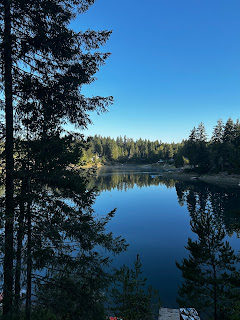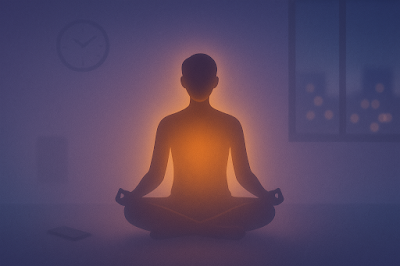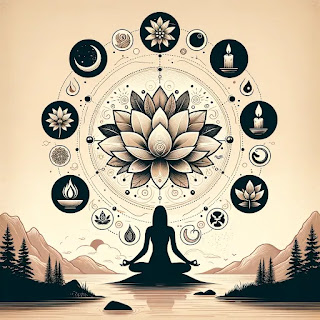Jhana Meditation for Beginners: A Comprehensive Guide
Jhana Meditation for Beginners:
A Comprehensive Guide
If you’re new to the world of meditation, the term “Jhanas” might have caught your attention like a whisper in a quiet room, promising profound depths of consciousness. They are often described as the heart of meditation, where the mind transcends ordinary states to find peace, joy, and insight. You’re in the right place if you’re eager to explore this further. This guide continues from where Part 1 left off, delving into how you can prepare for and potentially experience the Jhanas yourself.
Whether you’re here out of curiosity, seeking spiritual growth, or looking for a new dimension to add to your meditation practice, understanding Jhanas can transform your approach to mindfulness. This article will serve as your companion, offering practical steps, personal insights, and an exploration of what lies beyond the surface of daily awareness. Let’s embark on this journey together, where the promise of deep, meditative states awaits those willing to dive in.

Achieving the First Jhana
What is the First Jhana?
The first Jhana represents a gateway into the meditative journey, where one experiences a profound shift from the everyday mind to a state of pure joy and pleasant sensations. Unlike the fleeting pleasures derived from external sources, this joy is internal, born from the mind’s own capacity for concentration. Here, you transition from the realm of thought to one of feeling, where your awareness becomes enveloped in a sense of bliss and unity with your meditation object.
- Joy: This isn’t the ordinary happiness from daily life but a deep, serene joy that fills your being.
- Pleasant Sensations: Physical sensations might include a feeling of lightness, warmth, or even a sense of floating, as if the body’s boundaries dissolve.
Step-by-Step Guide to Entering the First Jhana
Setting the Right Intention
Before you begin, set a clear intention. This isn’t about achieving something but about opening up to the experience. Your intention could be as simple as “I am here to explore my consciousness” or “I want to experience joy within.”
- Intention as a Compass: Let your intention guide your practice, keeping you focused on the process rather than the outcome.
Techniques for Letting Go of Distractions
- Mindful Breathing: Focus on the sensation of breath, letting each inhale and exhale ease you away from distractions.
- Body Scan: Slowly move your attention from your toes to your head, releasing any tension. This not only helps in concentration but also in letting go of physical discomfort.
- Visualization: Imagine your thoughts as leaves floating down a stream, allowing them to pass without attachment.
Common Misconceptions
- Jhana Isn’t a Trance: Some believe entering Jhana means losing consciousness or control, but it’s the opposite. You’re more aware, yet in a different, more focused way.
- It’s Not Only for the Advanced: While it might seem like an advanced state, with the right preparation, even beginners can touch upon the fringes of Jhana.
Clarifying What Jhana Is Not
- Not a Fixed Goal: Jhana isn’t something you achieve once and then possess; it’s a state that can come and go, influenced by your practice and life conditions.
- Not Forced: You can’t will yourself into Jhana; it arises when conditions are right, particularly when you’ve cultivated access concentration and released expectations.
The Role of Physical Sensations
How Physical Sensations Guide Your Meditation
Physical sensations are not just byproducts of meditation; they are crucial signals that guide your practice. They can indicate your level of relaxation, focus, or even when you’re approaching deeper states like the Jhanas.
- Noticing the Body’s Language: As you meditate, your body might signal entry into deeper states through subtle changes. A sensation of warmth, tingling, or even a sense of expansion can be signs of progress.
- Techniques to Enhance Physical Comfort:
- Mindful Breathing: Pay attention to how your breath affects your body. Deep, slow breaths can relax muscles and prepare you for longer sessions.
- Body Scan: Before or during meditation, systematically notice each part of your body, releasing any tension. This not only helps with comfort but also deepens your concentration.
Adjusting Posture for Long Sessions
Traditional Postures vs. Modern Adaptations
- Traditional: The lotus position is iconic but not for everyone. Historically, various cultures have had different preferred postures, all aiming for stability and comfort.
- Modern Adaptations: Meditation cushions, chairs, or benches can be just as effective for those who find traditional postures challenging. The key is maintaining a position where you can remain still for extended periods.
Tips for Maintaining Posture Without Discomfort
- Spinal Alignment: Whether sitting or kneeling, keep your spine straight but not rigid. Think of it as a stack of coins, balanced but not tense.
- Support: Use cushions or supports under your knees or back if necessary. The aim is to reduce strain, allowing you to forget about your body and focus on your meditation.
Cultivating the Right Mindset
The journey into meditation, particularly into the Jhanas, starts with the mind. Setting an intention before meditation can profoundly influence your practice. An intention might be as simple as aiming for a calm and quiet mind or focusing on deepening your concentration. This premeditation act serves as a compass, guiding your thoughts and emotions during the session. To achieve this, engage in practices that promote mental calmness. Techniques like mindful breathing or focusing on loving-kindness can prepare your mind for the tranquility needed to delve deeper into meditation.
Dealing with Expectations
One of the biggest obstacles in meditation is the attachment to outcomes. Letting go of expectations is not just beneficial; it’s crucial for experiencing the Jhanas fully. When you meditate with the intent of achieving something, you inadvertently create tension, which is counterproductive. Instead, adopt strategies to embrace the meditation process itself. This means accepting each moment as it comes, without judgment or the desire to control the experience. This approach resonates deeply with Buddhist teachings on non-attachment, where the emphasis is on the journey rather than the destination. By releasing the grip on expectations, you invite a more natural unfolding of your meditation practice.
Overcoming Common Obstacles
The Five Hindrances
In the path of meditation, you’ll encounter the five hindrances which can disrupt your practice: ill will, sense desire, restlessness, sloth, and doubt. Identifying these obstacles is the first step to managing them. Ill will, for instance, involves any form of anger or aversion that can cloud your mind. Sense desire distracts by pulling your focus towards external pleasures. By acknowledging these hindrances when they arise, you can work to gently redirect your attention back to your meditation object, thereby weakening their hold over time.
Practical Solutions for Distractions and Restlessness
When distractions or restlessness invade your meditation, practical techniques can help realign your focus. Returning your awareness to your breath is a classic method; it’s simple yet effective. Alternatively, if physical discomfort contributes to restlessness, adjusting your posture can bring immediate relief, allowing you to settle back into meditation. These methods are not about battling distractions but about understanding and guiding your mind back to peace.
The Path Forward
Progressing Through Jhanas
As you continue your Jhana practice, you’ll begin to understand what to expect as you delve deeper into these states. Each Jhana offers a unique experience, from the joy and pleasure of the first Jhana to the equanimity of the higher ones. The progression isn’t strictly sequential; it’s more about sustaining access concentration over time, allowing for natural transitions into deeper meditation states. Consistency in practice is vital; it’s through regular meditation that you build the mental muscle to explore these profound states of awareness.
Resources for Further Exploration
or those keen on deepening their practice, numerous Jhana meditation resources are available. These can range from guided sessions to texts on Buddhist meditation, offering both practical advice and philosophical insights:
This guide has illuminated the path to preparing for and experiencing the Jhanas, with emphasis on setting the right intention, fostering a calm and quiet mind, and the importance of letting go. Meditation for beginners can seem daunting, but with patience and practice, the potential for deep concentration and profound peace is within reach. Remember, each meditation session is a step towards understanding the mind’s vast capabilities, encouraging you to continue this transformative journey.
Resources for Deepening Your Meditation Practice with the Jhanas
- Entering the Formless Jhanas: My First Steps into Infinite Space
Read the full article - Common Pitfalls and Misconceptions About the Jhanas: What I’ve Learned
Explore insights - Achieving Equanimity in the Fourth Jhana: My Experience
Discover more - Meditation and Creativity: 10 Techniques to Unlock Your Creative Potential
Learn techniques - Reflection on My Jhana Journey: Integrating Meditation Insights
Read reflections - How the Jhanas Have Transformed My Spiritual Path
Explore transformation - Applying Jhana Meditation Insights to Everyday Life
Apply insights - My Journey into the Third Jhana
Read about the third Jhana - The Journey to the Second Jhana
Explore the second Jhana - Finding Joy and Tranquility in the First Jhana: Personal Reflections
Discover joy and tranquility - Moving to the Second Jhana: Overcoming Challenges in Deep Meditation
- First Jhana: My Personal Journey into Deep Concentration
- How to Prepare Your Mind for Jhana Meditation: Tips for Beginners




